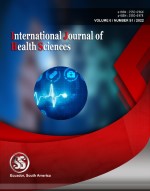Welfare economics and public health issues and option in India
A study with special reference to COVID-19
Keywords:
Public Health, COVID-19, welfare economics, pandemicAbstract
This paper will review and do critical analysis of the welfare economics and public health issues and options in India during COVID-19. A welfare and normative analysis have been followed to write this paper. Normative analysis of people and government on various health issues and options in Covid-19 are the goals and aims to determine the desired health facilities and its availability at time. Government of India had prepared various policies to cure the COVID-19, but due to high level of pandemic the situations were uncontrollable. People desired many heaths related facilities but due to large population it was impossible to cure each and every patient in hospitals. The whole world was suffering with the same problem but due to less population health facilities were not a big problem. Indian model which relates to economic activities with infectious disease epidemics was highly focused on welfare economics. In many nations lock down also affected the economic activities at large level. There is no systematic study which has been conducted about covid-19 and its consequences on the society at our best knowledge.
Downloads
References
Cori, L., National, I., Bianchi, F., & Anthonj, C. (2020). Risk perception and COVID-19. International Journal of Environmental Research and Public Health, 17(May), 2–6. https://doi.org/10.3390/ijerp h17093114
Dryhurst, S., Schneider, C. R., Kerr, J., Freeman, A. L. J., Recchia, G., Marthe, A., van der Bles, D. S., & van der Linden, S. (2020). Risk perceptions of COVID-19 around the world. Journal of Risk Research, 1–13. https://doi.org/10.1080/13669877.2020.1758193
Khosravi, M. (2020). Perceived risk of COVID-19 pandemic: the role of public worry and trust. Electronic Journal of General Medicine, 17(4), 1–3. https://doi.org/10.29333/ejgm/7856
FA: Mohammed, R. A., Saifaddin, A. L., Mahmood, H. F., & Habibi, N. (2022). Seismic Performance of I-shaped Beam-column Joint with Cubical and Triangular Slit Dampers Based on Finite Element Analysis. Journal of Studies in Science and Engineering, 2(1), 17-31.
FA: Hersh F. Mahmood, Hooshang Dabbagh, Azad A. Mohammed, Comparative study on using chemical and natural admixtures (grape and mulberry extracts) for concrete, Case Studies in Construction Materials, Volume 15, 2021,
Kumar, S. (2022). A quest for sustainium (sustainability Premium): review of sustainable bonds. Academy of Accounting and Financial Studies Journal, Vol. 26, no.2, pp. 1-18
Allugunti, V.R. (2019). Diabetes Kaggle Dataset Adequacy Scrutiny using Factor Exploration and Correlation. International Journal of Recent Technology and Engineering, Volume-8, Issue-1S4, pp 1105-1110.
Klein MG, Cheng CJ, Lii E, Mao K, Mesbahi H, Zhu T, et al. COVID-19 Models for Hospital Surge Capacity Planning: A Systematic Review. Disaster Med Public Health Prep. 2020:1–8
Kouadio IK, Koffi AK, Atoh-Toure H et al. Outbreak of measles and rubella in refugee transit camps. Epidemiol. Infect.137, 1593–1601 (2009)
Laufs, J., and Waseem, Z. (2020). Policing in pandemics: a systematic review and best practices for police response to COVID-19. Int. J. Disaster Risk Reduct. 51:101812. doi: 10.1016/j.ijdrr.2020.101812
Lippi G, Favaloro EJ, Plebani M, et al. Direct-to-consumer testing: more risks than opportunities. Int J Clin Pract 2011;65:1221-9.
Pappa, S., Ntella, V., Giannakas, T., Giannakoulis, V. G., Papoutsi, E., and Katsaounou, P. (2020). Prevalence of depression, anxiety, and insomnia among healthcare workers during the COVID-19 pandemic: A systematic review and meta-analysis. Brain. Behav. Immun. doi: 10.1016/j.bbi.2020.05.026.
Sjöberg, L. (2000). The methodology of risk perception research. Quality and Quantity, 34, 407–418. http:// link.springer.com/article
Tabari P, Amini M, Moghadami M, Moosavi M. International Public Health Responses to COVID-19 Outbreak: A Rapid Review. Iran J Med Sci. 2020 May;45(3):157–169. pmid:32546882
Watson JT, Gayer M, Connolly MA. Epidemics after natural disasters. Emerg Infect Dis. 2007;13(1):1–5. https://doi.org/10.3201/eid1301.060779
Published
How to Cite
Issue
Section
Copyright (c) 2022 International journal of health sciences

This work is licensed under a Creative Commons Attribution-NonCommercial-NoDerivatives 4.0 International License.
Articles published in the International Journal of Health Sciences (IJHS) are available under Creative Commons Attribution Non-Commercial No Derivatives Licence (CC BY-NC-ND 4.0). Authors retain copyright in their work and grant IJHS right of first publication under CC BY-NC-ND 4.0. Users have the right to read, download, copy, distribute, print, search, or link to the full texts of articles in this journal, and to use them for any other lawful purpose.
Articles published in IJHS can be copied, communicated and shared in their published form for non-commercial purposes provided full attribution is given to the author and the journal. Authors are able to enter into separate, additional contractual arrangements for the non-exclusive distribution of the journal's published version of the work (e.g., post it to an institutional repository or publish it in a book), with an acknowledgment of its initial publication in this journal.
This copyright notice applies to articles published in IJHS volumes 4 onwards. Please read about the copyright notices for previous volumes under Journal History.
















